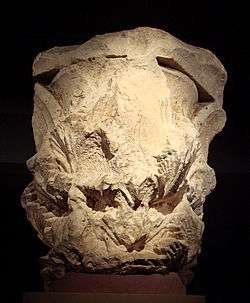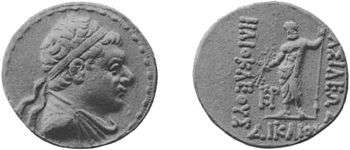Greco-Bactrian Kingdom
| Greco-Bactrian Kingdom | ||||||||||||||
| ||||||||||||||
 | ||||||||||||||
| Capital | Bactra Alexandria on the Oxus | |||||||||||||
| Languages | Greek Bactrian Old Aramaic Sogdian Parthian | |||||||||||||
| Religion | Hellenism Zoroastrianism Buddhism | |||||||||||||
| Government | Monarchy | |||||||||||||
| King
Today | ||||||||||||||
| • | 256–240 BC | Diodotus I | ||||||||||||
| • | 145–130 BC | Heliocles I | ||||||||||||
| Historical era | Antiquity | |||||||||||||
| • | Established | 256 BC | ||||||||||||
| • | Disestablished | 125 BC | ||||||||||||
| Area | ||||||||||||||
| • | 184 BC[1] | 2,500,000 km² (965,255 sq mi) | ||||||||||||
| ||||||||||||||
The Greco-Bactrian Kingdom was – along with the Indo-Greek Kingdom – the easternmost part of the Hellenistic world, covering Bactria and Sogdiana in Central Asia from 250 to 125 BC. It was centered on the north of present-day Afghanistan. The expansion of the Greco-Bactrians into present-day eastern Afghanistan and Pakistan from 180 BC established the Indo-Greek Kingdom, which was to last until around 10 AD.[2][3][4]
Independence (around 250 BC)
Diodotus, the satrap of Bactria (and probably the surrounding provinces) founded the Greco-Bactrian Kingdom when he seceded from the Seleucid Empire around 250 BC and became King Diodotus I of Bactria. The preserved ancient sources (see below) are somewhat contradictory, and the exact date of Bactrian independence has not been settled. Somewhat simplified, there is a high chronology (c. 255 BC) and a low chronology (c. 246 BC) for Diodotos’ secession.[5] The high chronology has the advantage of explaining why the Seleucid king Antiochus II issued very few coins in Bactria, as Diodotos would have become independent there early in Antiochus' reign.[6] On the other hand, the low chronology, from the mid-240s BC, has the advantage of connecting the secession of Diodotus I with the Third Syrian War, a catastrophic conflict for the Seleucid Empire.
- Diodotus, the governor of the thousand cities of Bactria (Latin: Theodotus, mille urbium Bactrianarum praefectus), defected and proclaimed himself king; all the other people of the Orient followed his example and seceded from the Macedonians. (Justin, XLI,4)[7]
The new kingdom, highly urbanized and considered as one of the richest of the Orient (opulentissimum illud mille urbium Bactrianum imperium "The extremely prosperous Bactrian empire of the thousand cities" Justin, XLI,1 [8]), was to further grow in power and engage into territorial expansion to the east and the west:
- The Greeks who caused Bactria to revolt grew so powerful on account of the fertility of the country that they became masters, not only of Ariana, but also of India, as Apollodorus of Artemita says: and more tribes were subdued by them than by Alexander... Their cities were Bactra (also called Zariaspa, through which flows a river bearing the same name and emptying into the Oxus), and Darapsa, and several others. Among these was Eucratidia,[9] which was named after its ruler. (Strabo, XI.XI.I)[10]
In 247 BC, the Ptolemaic empire (the Greek rulers of Egypt following the death of Alexander the Great) captured the Selucid capital, Antioch. In the resulting power vacuum, the satrap of Parthia proclaimed independence from the Selucids, declaring himself king. A decade later, he was defeated and killed by Arsaces of Parthia, leading to the rise of a Parthian Empire. This cut Bactria off from contact with the Greek world. Overland trade continued at a reduced rate, while sea trade between Greek Egypt and Bactria developed.
Diodotus was succeeded by his son Diodotus II, who allied himself with the Parthian Arsaces in his fight against Seleucus II:
- Soon after, relieved by the death of Diodotus, Arsaces made peace and concluded an alliance with his son, also by the name of Diodotus; some time later he fought against Seleucos who came to punish the rebels, and he prevailed: the Parthians celebrated this day as the one that marked the beginning of their freedom. (Justin, XLI,4)[11]
Overthrow of Diodotus II (230 BC)

Euthydemus, a Magnesian Greek according to Polybius[12] and possibly satrap of Sogdiana, overthrew the dynasty of Diodotus I around 230-220 BC and started his own dynasty. Euthydemus's control extended to Sogdiana, going beyond the city of Alexandria Eschate founded by Alexander the Great in Ferghana:
- And they also held Sogdiana, situated above Bactriana towards the east between the Oxus River, which forms the boundary between the Bactrians and the Sogdians, and the Iaxartes River. And the Iaxartes forms also the boundary between the Sogdians and the nomads. (Strabo XI.11.2)[13]
Seleucid invasion
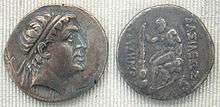
Euthydemus was attacked by the Seleucid ruler Antiochus III around 210 BC. Although he commanded 10,000 horsemen, Euthydemus initially lost a battle on the Arius[14] and had to retreat. He then successfully resisted a three-year siege in the fortified city of Bactra (modern Balkh), before Antiochus finally decided to recognize the new ruler, and to offer one of his daughters to Euthydemus's son Demetrius around 206 BC.[15] Classical accounts also relate that Euthydemus negotiated peace with Antiochus III by suggesting that he deserved credit for overthrowing the original rebel Diodotus, and that he was protecting Central Asia from nomadic invasions thanks to his defensive efforts:
- ...for if he did not yield to this demand, neither of them would be safe: seeing that great hordes of Nomads were close at hand, who were a danger to both; and that if they admitted them into the country, it would certainly be utterly barbarised. (Polybius, 11.34)[12]
Geographic expansion
Following the departure of the Seleucid army, the Bactrian kingdom seems to have expanded. In the west, areas in north-eastern Iran may have been absorbed, possibly as far as into Parthia, whose ruler had been defeated by Antiochus the Great. These territories possibly are identical with the Bactrian satrapies of Tapuria and Traxiane.
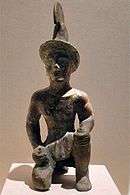
Contacts with the Han Empire

To the north, Euthydemus also ruled Sogdiana and Ferghana, and there are indications that from Alexandria Eschate the Greco-Bactrians may have led expeditions as far as Kashgar and Ürümqi in Xinjiang, leading to the first known contacts between China and the West around 220 BC. The Greek historian Strabo too writes that: "they extended their empire even as far as the Seres (Chinese) and the Phryni". (Strabo, XI.XI.I).[10]
Several statuettes and representations of Greek soldiers have been found north of the Tien Shan, on the doorstep to China, and are today on display in the Xinjiang museum at Urumqi (Boardman).[16] Greek influences on Chinese art have also been suggested (Hirth, Rostovtzeff). Designs with rosette flowers, geometric lines, and glass inlays, suggestive of Hellenistic influences,[17] can be found on some early Han dynasty bronze mirrors.[18]
Excavations at the burial site of China's first Emperor Qin Shi Huang, dating back to the 3rd century BCE, also suggest Greek influence in the artworks found there, including in the manufacture of the famous Terracotta army. It is also suggested that Greek artists may have come to China at that time to train local artisans in making sculptures [19][20]
Numismatics also suggest that some technology exchanges may have occurred on these occasions: the Greco-Bactrians were the first in the world to issue cupro-nickel (75/25 ratio) coins,[21] an alloy technology only known by the Chinese at the time under the name "White copper" (some weapons from the Warring States period were in copper-nickel alloy).[22] The practice of exporting Chinese metals, in particular iron, for trade is attested around that period. Kings Euthydemus, Euthydemus II, Agathocles and Pantaleon made these coin issues around 170 BC and it has alternatively been suggested that a nickeliferous copper ore was the source from mines at Anarak.[23] Copper-nickel would not be used again in coinage until the 19th century.
The presence of Chinese people in India from ancient times is also suggested by the accounts of the "Ciñas" in the Mahabharata and the Manu Smriti. The Han Dynasty explorer and ambassador Zhang Qian visited Bactria in 126 BC, and reported the presence of Chinese products in the Bactrian markets:
- When I was in Bactria (Daxia)", Zhang Qian reported, "I saw bamboo canes from Qiong and cloth made in the province of Shu (territories of southwestern China). When I asked the people how they had gotten such articles, they replied, "Our merchants go buy them in the markets of Shendu (India). (Shiji 123, Sima Qian, trans. Burton Watson).
Upon his return, Zhang Qian informed the Chinese emperor Han Wudi of the level of sophistication of the urban civilizations of Ferghana, Bactria and Parthia, who became interested in developing commercial relationship with them:
- The Son of Heaven on hearing all this reasoned thus: Ferghana (Dayuan) and the possessions of Bactria (Daxia) and Parthia (Anxi) are large countries, full of rare things, with a population living in fixed abodes and given to occupations somewhat identical with those of the Chinese people, and placing great value on the rich produce of China. (Hanshu, Former Han History).
A number of Chinese envoys were then sent to Central Asia, triggering the development of the Silk Road from the end of the 2nd century BC.[24]
Contacts with the Indian Subcontinent (250–180)
The Indian emperor Chandragupta, founder of the Mauryan dynasty, had re-conquered the northwestern subcontinent upon the death of Alexander the Great around 322 BC. However, contacts were kept with his Greek neighbours in the Seleucid Empire, a dynastic alliance or the recognition of intermarriage between Greeks and Indians were established (described as an agreement on Epigamia in Ancient sources), and several Greeks, such as the historian Megasthenes, resided at the Mauryan court. Subsequently, each Mauryan emperor had a Greek ambassador at his court.
Chandragupta's grandson Ashoka converted to the Buddhist faith and became a great proselytizer in the line of the traditional Pali canon of Theravada Buddhism, directing his efforts towards the Indo-Iranic and the Hellenistic worlds from around 250 BC. According to the Edicts of Ashoka, set in stone, some of them written in Greek, he sent Buddhist emissaries to the Greek lands in Asia and as far as the Mediterranean. The edicts name each of the rulers of the Hellenistic world at the time.
- The conquest by Dharma has been won here, on the borders, and even six hundred yojanas (4,000 miles) away, where the Greek king Antiochos rules, beyond there where the four kings named Ptolemy, Antigonos, Magas and Alexander rule, likewise in the south among the Cholas, the Pandyas, and as far as Tamraparni. (Edicts of Ashoka, 13th Rock Edict, S. Dhammika).
Some of the Greek populations that had remained in northwestern India apparently converted to Buddhism:
- Here in the king's domain among the Greeks, the Kambojas, the Nabhakas, the Nabhapamkits, the Bhojas, the Pitinikas, the Andhras and the Palidas, everywhere people are following Beloved-of-the-Gods' instructions in Dharma. (Edicts of Ashoka, 13th Rock Edict, S. Dhammika).
Furthermore, according to Pali sources, some of Ashoka's emissaries were Greek Buddhist monks, indicating close religious exchanges between the two cultures:
- When the thera (elder) Moggaliputta, the illuminator of the religion of the Conqueror (Ashoka), had brought the (third) council to an end… he sent forth theras, one here and one there: …and to Aparantaka (the "Western countries" corresponding to Gujarat and Sindh) he sent the Greek (Yona) named Dhammarakkhita... and the thera Maharakkhita he sent into the country of the Yona. (Mahavamsa XII).
Greco-Bactrians probably received these Buddhist emissaries (At least Maharakkhita, lit. "The Great Saved One", who was "sent to the country of the Yona") and somehow tolerated the Buddhist faith, although little proof remains. In the 2nd century AD, the Christian dogmatist Clement of Alexandria recognized the existence of Buddhist Sramanas among the Bactrians ("Bactrians" meaning "Oriental Greeks" in that period), and even their influence on Greek thought:
- Thus philosophy, a thing of the highest utility, flourished in antiquity among the barbarians, shedding its light over the nations. And afterwards it came to Greece. First in its ranks were the prophets of the Egyptians; and the Chaldeans among the Assyrians; and the Druids among the Gauls; and the Sramanas among the Bactrians ("Σαρμαναίοι Βάκτρων"); and the philosophers of the Celts; and the Magi of the Persians, who foretold the Saviour's birth, and came into the land of Judea guided by a star. The Indian gymnosophists are also in the number, and the other barbarian philosophers. And of these there are two classes, some of them called Sramanas ("Σαρμάναι"), and others Brahmins ("Βραφμαναι"). Clement of Alexandria "The Stromata, or Miscellanies" Book I, Chapter XV.[25]
Influence on Indian art during the 3rd century BCE

The Greco-Bactrian city of Ai-Khanoum being located at the doorstep of India, interacting with the Indian subcontinent, and having a rich Hellenistic culture, was in a unique position to influence Indian culture as well. It is considered that Ai-Khanoum may have been one of the primary actors in transmitting Western artistic influence to India, for example in the creation of the Pillars of Ashoka or the manufacture of the quasi-Ionic Pataliputra capital, all of which were posterior to the establishment of Ai-Khanoum.[26]
The scope of adoption goes from designs such as the bead and reel pattern, the central flame palmette design and a variety of other moldings, to the life-like rendering of animal sculpture and the design and function of the Ionic anta capital in the palace of Pataliputra.[27]
First visual representations of Indian deities
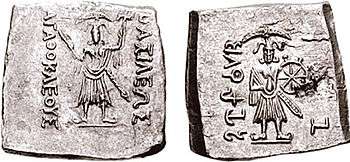
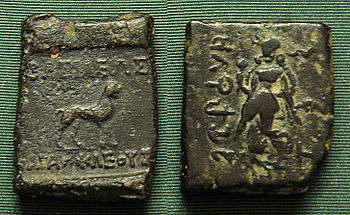
One of the last Greco-Bactrian kings, Agathocles of Bactria (ruled 190-180 BCE), issued remarkable Indian-standard square coins bearing the first known representations of Indian deities, which have been variously interpreted as Vishnu, Shiva, Vasudeva, Buddha or Balarama. Altogether, six such Indian-standard silver drachmas in the name of Agathocles were discovered at Ai-Khanoum in 1970.[28][29][30] These coins seem to be the first known representations of Vedic deities on coins, and they display early Avatars of Vishnu: Balarama-Sankarshana with attributes consisting of the Gada mace and the plow, and Vasudeva-Krishna with the Vishnu attributes of the Shankha (a pear-shaped case or conch) and the Sudarshana Chakra wheel.[29] Some other coins by Agathocles are also thought to represent the Buddhist lion and the Indian goddess Lakshmi, consort of Vishnu.[30] The Indian coinage of Agathocles is few but spectacular. These coins at least demonstrate the readiness of Greek kings to represent deities of foreign origin. The dedication of a Greek envoy to the cult of Garuda at the Heliodorus pillar in Besnagar could also be indicative of some level of religious syncretism.
Expansion into the Indian subcontinent (after 180 BC)

Demetrius, the son of Euthydemus, started an invasion of the subcontinent from 180 BC, a few years after the Mauryan empire had been overthrown by the Shunga dynasty. Historians differ on the motivations behind the invasion. Some historians suggest that the invasion of the subcontinent was intended to show their support for the Mauryan empire, and to protect the Buddhist faith from the religious persecutions of the Shungas as alleged by Buddhist scriptures (Tarn). Other historians have argued however that the accounts of these persecutions have been exaggerated (Thapar, Lamotte).
Demetrius may have been as far as the imperial capital Pataliputra in today's eastern India (today Patna). However, these campaigns are typically attributed to Menander. The invasion was completed by 175 BC. This established in the northwestern Indian Subcontinent what is called the Indo-Greek Kingdom, which lasted for almost two centuries until around AD 10. The Buddhist faith flourished under the Indo-Greek kings, foremost among them Menander I. It was also a period of great cultural syncretism, exemplified by the development of Greco-Buddhism.
Usurpation of Eucratides
Back in Bactria, Eucratides, either a general of Demetrius or an ally of the Seleucids, managed to overthrow the Euthydemid dynasty and establish his own rule around 170 BC, probably dethroning Antimachus I and Antimachus II. The Indian branch of the Euthydemids tried to strike back. An Indian king called Demetrius (very likely Demetrius II) is said to have returned to Bactria with 60,000 men to oust the usurper, but he apparently was defeated and killed in the encounter:

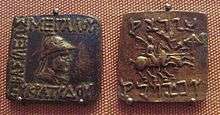
- Eucratides led many wars with great courage, and, while weakened by them, was put under siege by Demetrius, king of the Indians. He made numerous sorties, and managed to vanquish 60,000 enemies with 300 soldiers, and thus liberated after four months, he put India under his rule. (Justin, XLI,6)[31]
Eucratides campaigned extensively in present-day northwestern India, and ruled on a vast territory as indicated by his minting of coins in many Indian mints, possibly as far as the Jhelum River in Punjab. In the end however, he was repulsed by the Indo-Greek king Menander I, who managed to create a huge unified territory.
In a rather confused account, Justin explains that Eucratides was killed on the field by "his son and joint king", who would be his own son, either Eucratides II or Heliocles I (although there are speculations that it could be his enemy's son Demetrius II). The son drove over Eucratides' bloodied body with his chariot and left him dismembered without a sepulchre:
- As Eucratides returned from India, he was killed on the way back by his son, whom he had associated to his rule, and who, without hiding his parricide, as if he didn't kill a father but an enemy, ran with his chariot over the blood of his father, and ordered the corpse to be left without a sepulture. (Justin XLI,6)[31]
Defeats by Parthia
During or after his Indian campaigns, Eucratides was attacked and defeated by the Parthian king Mithridates I, possibly in alliance with partisans of the Euthydemids:

- The Bactrians, involved in various wars, lost not only their rule but also their freedom, as, exhausted by their wars against the Sogdians, the Arachotes, the Dranges, the Arians and the Indians, they were finally crushed, as if drawn of all their blood, by an enemy weaker than them, the Parthians. (Justin, XLI,6)[31]
Following his victory, Mithridates I gained Bactria's territory west of the Arius, the regions of Tapuria and Traxiane:
- "The satrapy Turiva and that of Aspionus were taken away from Eucratides by the Parthians." (Strabo XI.11.20[13]
In the year 141 BC, the Greco-Bactrians seem to have entered in an alliance with the Seleucid king Demetrius II to fight again against Parthia:
- The people of the Orient welcomed his (Demetrius II's) arrival, partly because of the cruelty of the Arsacid king of the Parthians, partly because, used to the rule of the Macedonians, they disliked the arrogance of this new people. Thus, Demetrius, supported by the Persians, Elymes and Bactrians, routed the Parthians in numerous battles. At the end, deceived by a false peace treaty, he was taken prisoner. (Justin XXXVI, 1,1)[32]
The 5th century historian Orosius reports that Mithridates I managed to occupy territory between the Indus and the Hydaspes towards the end of his reign (c. 138 BC, before his kingdom was weakened by his death in 136 BC).[33]
Heliocles I ended up ruling what territory remained. The defeat, both in the west and the east, may have left Bactria very weakened and open to nomadic invasions.
Nomadic invasions
Yuezhi expansion (c. 162 BC-)

According to the Han chronicles, following a crushing defeat in 162 BC by the Xiongnu, the nomadic tribes of the Yuezhi fled from the Tarim Basin towards the west, crossed the neighbouring urban civilization of the "Dayuan" (probably the Greek possessions in Ferghana), and resettled north of the Oxus in modern-day Kazakhstan and Uzbekistan, in the northern part of the Greco-Bactrian territory. The Dayuan remained a healthy and powerful urban civilization which had numerous contacts and exchanges with China from 130 BC.
Scythians (c. 140 BC-)
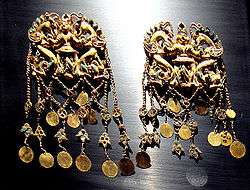
Around 140 BC, eastern Scythians (the Saka, or Sacaraucae of Greek sources), apparently being pushed forward by the southward migration of the Yuezhi started to invade various parts of Parthia and Bactria. Their invasion of Parthia is well documented: they attacked in the direction of the cities of Merv, Hecatompolis and Ecbatana. They managed to defeat and kill the Parthian king Phraates II, son of Mithridates I, routing the Greek mercenary troops under his command (troops he had acquired during his victory over Antiochus VII). Again in 123 BC, Phraates's successor, his uncle Artabanus I was killed by the Scythians.[34]
Second Yuezhi expansion (120 BC-)
When Zhang Qian visited the Yuezhi in 126 BC, trying to obtain their alliance to fight the Xiongnu, he explained that the Yuezhi were settled north of the Oxus but also held under their sway the territory south of Oxus, which makes up the remaining of Bactria.
According to Zhang Qian, the Yuezhi represented a considerable force of between 100,000 and 200,000 mounted archer warriors,[35] with customs identical to those of the Xiongnu, which would probably have easily defeated Greco-Bactrian forces (in 208 BC when the Greco-Bactrian king Euthydemus I confronted the invasion of the Seleucid king Antiochus III the Great, he commanded 10,000 horsemen).[14] Zhang Qian actually visited Bactria (named Daxia in Chinese) in 126 BC, and portrays a country which was totally demoralized and whose political system had vanished, although its urban infrastructure remained:
- Daxia (Bactria) is located over 2,000 li southwest of Dayuan, south of the Gui (Oxus) river. Its people cultivate the land and have cities and houses. Their customs are like those of Dayuan. It has no great ruler but only a number of petty chiefs ruling the various cities. The people are poor in the use of arms and afraid of battle, but they are clever at commerce. After the Great Yuezhi moved west and attacked Daxia, the entire country came under their sway. The population of the country is large, numbering some 1,000,000 or more persons. The capital is called the city of Lanshi (Bactra) and has a market where all sorts of goods are bought and sold. (Records of the Great Historian by Sima Qian, quoting Zhang Qian, trans. Burton Watson)
The Yuezhi further expanded southward into Bactria around 120 BC, apparently further pushed out by invasions from the northern Wusun. It seems they also pushed Scythian tribes before them, which continued to India, where they came to be identified as Indo-Scythians.
The invasion is also described in western Classical sources from the 1st century BC:
- The best known tribes are those who deprived the Greeks of Bactriana, the Asii, Pasiani, Tochari, and Sacarauli, who came from the country on the other side of the Jaxartes, opposite the Sacae and Sogdiani.
(Strabo, 11-8-1 [36])
Around that time the king Heliocles abandoned Bactria and moved his capital to the Kabul valley, from where he ruled his Indian holdings. Having left the Bactrian territory, he is technically the last Greco-Bactrian king, although several of his descendants, moving beyond the Hindu Kush, would form the western part of the Indo-Greek kingdom. The last of these "western" Indo-Greek kings, Hermaeus, would rule until around 70 BC, when the Yuezhi again invaded his territory in the Paropamisadae (while the "eastern" Indo-Greek kings would continue to rule until around AD 10 in the area of the Punjab region).
Overall, the Yuezhi remained in Bactria for more than a century. They became Hellenized to some degree, as suggested by their adoption of the Greek alphabet to write their Iranian language, and by numerous remaining coins, minted in the style of the Greco-Bactrian kings, with the text in Greek.
Around 12 BC the Yuezhi then moved further to northern India where they established the Kushan Empire.
Military forces
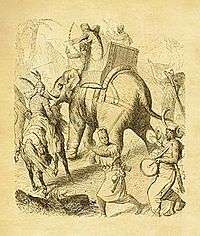
Before the arrival of the Greek settlers, the armies of Bactria were overwhelmingly composed of cavalry and were well known as effective soldiers, making up large portions of the Achaemenid cavalry contingents. 2,000 Bactrian horsemen fought at the Granicus against Alexander and 9,000 at the Battle of Gaugamela on the left flank of Darius' army. Herodotus also mentions the widespread use of chariots among the Bactrians. After Alexander's conquest of Bactria, Bactrian cavalry units served in his army during the invasion of India and after the Indian campaign, Alexander enlarged his elite companion cavalry by adding Bactrians, Sogdians and other east Iranian cavalrymen.[37] Both Aeschylus (The Persians, v. 318) and Curtius mention that Bactria was able to field a force of 30,000 horse. Most of these horsemen were lightly armed, using bows and javelins before closing with sword and spear. Herodotus describes the Persian cavalry of Mardonius at the Battle of Plataea (which included Bactrians) as horse archers (hippotoxotai). Bactrian infantry is described by Herodotus as wearing caps in the Median style, short spears and reed Scythian style bows.
Alexander and Seleucus I both settled Greeks in Bactria, while preferring to keep their Macedonian settlers farther west. Greek garrisons in the satrapy of Bactria were housed in fortresses called phrouria and at major cities. Military colonists were settled in the countryside and were each given an allotment of land called a kleros. These colonists numbered in the tens of thousands, and were trained in the fashion of the Macedonian army. A Greek army in Bactria during the anti-Macedonian revolt of 323 numbered 23,000.[37]
The army of the Greco-Bactrian kingdom was then a multi-ethnic force with Greek colonists making up large portions of the infantry as pike phalanxes, supported by light infantry units of local Bactrians and mercenary javelin wielding Thureophoroi.[38] The cavalry arm was very large for a Hellenistic army and composed mostly of native Bactrian, Sogdian and other Indo-Iranian light horsemen. Polybius mentions 10,000 horse at the Battle of the Arius river in 208 BC. Greco-Bactrian armies also included units of heavily armored cataphracts and small elite units of companion cavalry. The third arm of the Greco-Bactrian army were the Indian war elephants, which are depicted in some coins with a tower (thorakion) or howdah housing men armed with bows and javelins. This force grew as the Greco-Bactrian kingdom expanded into India and was widely depicted in Greco-Bactrian coinage. Other units in the Bactrian military included mercenaries or levies from various surrounding peoples such as the Scythians, Dahae, Indians and Parthians.
Greek culture in Bactria
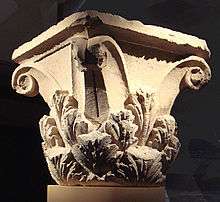
The Greco-Bactrians were known for their high level of Hellenistic sophistication, and kept regular contact with both the Mediterranean and neighbouring India. They were on friendly terms with India and exchanged ambassadors.
Their cities, such as Ai-Khanoum in northeastern Afghanistan (probably Alexandria on the Oxus), and Bactra (modern Balkh) where Hellenistic remains have been found, demonstrate a sophisticated Hellenistic urban culture. This site gives a snapshot of Greco-Bactrian culture around 145 BC, as the city was burnt to the ground around that date during nomadic invasions and never re-settled. Ai-Khanoum "has all the hallmarks of a Hellenistic city, with a Greek theater, gymnasium and some Greek houses with colonnaded courtyards" (Boardman). Remains of Classical Corinthian columns were found in excavations of the site, as well as various sculptural fragments. In particular a huge foot fragment in excellent Hellenistic style was recovered, which is estimated to have belonged to a 5–6 meters tall statue.
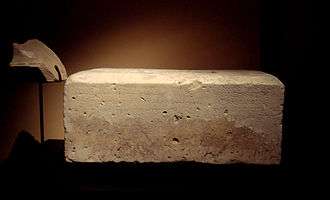
One of the inscriptions in Greek found at Ai-Khanoum, the Herôon of Kineas, has been dated to 300–250 BC, and describes Delphic precepts:
- As children, learn good manners.
- As young men, learn to control the passions.
- In middle age, be just.
- In old age, give good advice.
- Then die, without regret.
Some of the Greco-Bactrian coins, and those of their successors the Indo-Greeks, are considered the finest examples of Greek numismatic art with "a nice blend of realism and idealization", including the largest coins to be minted in the Hellenistic world: the largest gold coin was minted by Eucratides (reigned 171–145 BC), the largest silver coin by the Indo-Greek king Amyntas Nikator (reigned c. 95–90 BC). The portraits "show a degree of individuality never matched by the often bland depictions of their royal contemporaries further West" (Roger Ling, "Greece and the Hellenistic World").
Several other Greco-Bactrian cities have been further identified, as in Saksanokhur in southern Tajikistan (archaeological searches by a Soviet team under B.A. Litvinski), or in Dal'verzin Tepe.
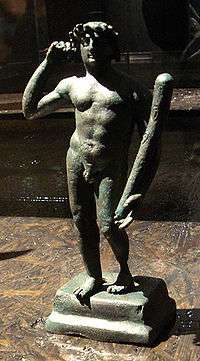 Bronze Herakles statuette. Ai Khanoum. 2nd century BC.
Bronze Herakles statuette. Ai Khanoum. 2nd century BC.- Sculpture of an old man, possibly a philosopher. Ai Khanoum, 2nd century BC.
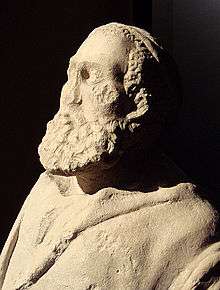 Close-up of the same statue.
Close-up of the same statue. Frieze of a naked man wearing a chlamys. Ai Khanoum, 2nd century BC.
Frieze of a naked man wearing a chlamys. Ai Khanoum, 2nd century BC. Same frieze, seen from the side.
Same frieze, seen from the side.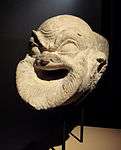 Gargoyle in the form of a Greek comic mask. Ai Khanoum, 2nd century BC.
Gargoyle in the form of a Greek comic mask. Ai Khanoum, 2nd century BC. Plate depicting Cybele pulled by lions. Ai Khanoum.
Plate depicting Cybele pulled by lions. Ai Khanoum.
Main Greco-Bactrian kings

House of Diodotus
Territories of Bactria, Sogdiana, Ferghana, Arachosia:
- Diodotus I (reigned c. 250–240 BC) Coins
- Diodotus II (reigned c. 240–230 BC) Son of Diodotus I Coins
The existence of a third Diodotid king, Antiochus Nikator, perhaps a younger son of Diodotus I, has recently been suggested.
Many of the dates, territories, and relationships between Greco-Bactrian kings are tentative and essentially based on numismatic analysis and a few Classical sources. The following list of kings, dates and territories after the reign of Demetrius is derived from the latest and most extensive analysis on the subject, by Osmund Bopearachchi ("Monnaies Gréco-Bactriennes et Indo-Grecques, Catalogue Raisonné", 1991).
House of Euthydemus
Territories of Bactria, Sogdiana, Ferghana, Arachosia:
- Euthydemus I (reigned c. 223-c. 200 BC) Overthrew Diodotus II. Coins

The descendants of the Greco-Bactrian king Euthydemus invaded northern India around 190 BC. Their dynasty was probably thrown out of Bactria after 170 BC by the new king Eucratides, but remained in the Indian domains of the empire at least until the 150s BC.
- Demetrius I (reigned c. 200–180 BC) Son of Euthydemus I. Greco-Bactrian king, and conqueror of India. Coins
The territory won by Demetrius was separated between western and eastern parts, ruled by several sub-kings and successor kings:
Territory of Bactria
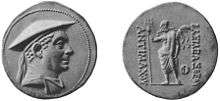
- Euthydemus II (c. 180 BC), probably a son of Demetrius. Coins
- Antimachus I (possibly c. 185–170 BC), brother of Demetrius. Defeated by usurper Eucratides. Coins
Territories of Paropamisadae, Arachosia, Gandhara, Punjab
- Pantaleon (190s or 180s BC) Possibly another brother and co-ruler of Demetrius I.
- Agathocles (c. 190–180 BC) Yet another brother? Coins
- Apollodotus I (reigned c. 180–160 BC) A fourth brother?
- Antimachus II Nikephoros (160–155 BC)
- Demetrius II (155–150 BC) Coins
- Menander (reigned c. 155–130 BC). Legendary for the size of his Kingdom, and his support of the Buddhist faith. It is unclear whether he was related to the other kings, and thus if the dynasty survived further.Coins
- Followed by Indo-Greek kings in northern India.
House of Eucratides

Territory of Bactria and Sogdiana
- Eucratides I 170-c. 145 BC Coins
- Plato co-regent c. 166 BC
- Eucratides II 145–140 BC Coins
- Heliocles (r. c. 145–130 BC).
Heliocles, the last Greek king of Bactria, was invaded by the nomadic tribes of the Yuezhi from the North. Descendants of Eucratides may have ruled on in the Indo-Greek kingdom.
| Greco-Bactrian kings | ||||||||||||
| Territories/ dates | Dynastic lineage | Bactrian domain | Expansion into India | |||||||||
|---|---|---|---|---|---|---|---|---|---|---|---|---|
| 280 BCE | Foundation of the Hellenistic city of Ai-Khanoum in Bactria (280 BCE) | |||||||||||
| 255 BCE | Independence of the Greco-Bactrian Kingdom from the Seleucid Empire (255 BCE) | |||||||||||
| 255–239 BCE | House of Diodotus. | Diodotus I | ||||||||||
| 239–223 BCE | Diodotus II | |||||||||||
| 230–200 BCE | House of Euthydemus. | Euthydemus I | ||||||||||
| 200–180 BCE | Demetrius I | Pantaleon | ||||||||||
| 180 BCE | Euthydemus II | Agathokles | ||||||||||
| 180–170 BCE | Antimachus I | Apollodotus I | ||||||||||
| 170–145 BCE | House of Eucratides | Eucratides | Demetrius II | |||||||||
| 145 BCE | (Destruction of Ai-Khanoum by the Yuezhi in 145 BCE) | (Succession of | ||||||||||
| 145–140 BCE | Plato Eucratides II | Indo-Greek kings | ||||||||||
| 140–130 BCE | Heliocles I | to the | ||||||||||
| 130 BCE- | Complete occupation of Bactria by the Yuezhi. | 1st century CE) | ||||||||||
See also
Notes
- ↑ Taagepera, Rein (1979). "Size and Duration of Empires: Growth-Decline Curves, 600 B.C. to 600 A.D.". Social Science History. 3 (3/4): 132. doi:10.2307/1170959. Retrieved 16 September 2016.
- ↑ Doumanis, Nicholas. A History of Greece Palgrave Macmillan, 16 dec. 2009 ISBN 978-1137013675 p 64
- ↑ Baumer, Christoph. The History of Central Asia: The Age of the Steppe Warriors Vol. 1 I.B.Tauris, 11 dec. 2012 ISBN 978-1780760605 p 289
- ↑ Kaushik Roy. Military Manpower, Armies and Warfare in South Asia Routledge, 28 jul. 2015 ISBN 978-1317321279
- ↑ J. D. Lerner, The Impact of Seleucid Decline on the Eastern Iranian Plateau: the Foundations of Arsacid Parthia and Graeco-Bactria, (Stuttgart 1999)
- ↑ F. L. Holt, Thundering Zeus (Berkeley 1999)
- ↑ Justin XLI, paragraph 4
- ↑ Justin XLI, paragraph 1
- ↑ possibly present day Qarshi; Encyclopaedia Metropolitana: Or Universal Dictionary of Knowledge, Volume 23, edited by Edward Smedley, Hugh James Rose, Henry John Rose, 1923, page 260, states: "Eucratidia, named from its ruler, (Strabo, xi. p. 516.) was, according to Ptolemy, 2° North and 1° West of Bactra." As these coordinates are relative to, and close to, Bactra, it is reasonable to disregard the imprecision in Ptolemy's coordinates and accept them without adjustment. If the coordinates for Bactra are taken to be 36°45′N 66°55′E / 36.750°N 66.917°E, then the coordinates 38°45′N 65°55′E / 38.750°N 65.917°E can be seen to be close to the modern day city of Qarshi.
- 1 2 Strabo XI.XI.I
- ↑ Justin XLI
- 1 2 Polybius 11.34
- 1 2 Strabo 11.11.2
- 1 2 Polybius 10.49, Battle of the Arius
- ↑ Polybius 11.34 Siege of Bactra
- ↑ On the image of the Greek kneeling warrior: "A bronze figurine of a kneeling warrior, not Greek work, but wearing a version of the Greek Phrygian helmet.. From a burial, said to be of the 4th century BC, just north of the Tien Shan range". Ürümqi Xinjiang Museum. (Boardman "The diffusion of Classical Art in Antiquity")
- ↑ Notice of the British Museum on the Zhou vase (2005, attached image): "Red earthenware bowl, decorated with a slip and inlaid with glass paste. Eastern Zhou period, 4th–3rd century BC. This bowl was probably intended to copy a more precious and possibly foreign vessel in bronze or even silver. Glass was little used in China. Its popularity at the end of the Eastern Zhou period was probably due to foreign influence."
- ↑ "The things which China received from the Graeco-Iranian world-the pomegranate and other "Chang-Kien" plants, the heavy equipment of the cataphract, the traces of Greeks influence on Han art (such as) the famous white bronze mirror of the Han period with Graeco-Bactrian designs (...) in the Victoria and Albert Museum" (Tarn, The Greeks in Bactria and India, pp. 363-364)
- ↑ BBC Western contact with China began long before Marco Polo, experts say
- ↑ The Mausoleum of China’s First Emperor Partners with the BBC and National Geographic Channel to Reveal Groundbreaking Evidence That China Was in Contact with the West During the Reign of the First Emperor
- ↑ Copper-Nickel coinage in Greco-Bactria.
- ↑ Ancient Chinese weapons A halberd of copper-nickel alloy, from the Warring States Period.
- ↑ A.A. Moss pp317-318 Numismatic Chronicle 1950
- ↑ C.Michael Hogan, Silk Road, North China, Megalithic Portal, ed. A. Burnham
- ↑ Clement of Alexandria "The Stromata, or Miscellanies" Book I, Chapter XV
- ↑ John Boardman, "The Origins of Indian Stone Architecture", p.15
- ↑ John Boardman, "The Origins of Indian Stone Architecture", p.13-22
- ↑ Alexander the Great and Bactria: The Formation of a Greek Frontier in Central Asia, Frank Lee Holt, Brill Archive, 1988, p.2
- 1 2 Iconography of Balarāma, Nilakanth Purushottam Joshi, Abhinav Publications, 1979, p.22
- 1 2 The Hellenistic World: Using Coins as Sources, Peter Thonemann, Cambridge University Press, 2016, p.101
- 1 2 3 Justin XLI,6
- ↑ Justin XXXVI, 1,1
- ↑ Mentioned in "Hellenism in ancient India", Banerjee, p140, to be taken carefully since Orosius is often rather unreliable in his accounts.
- ↑ "Parthians and Sassanid Persians", Peter Wilcox, p15
- ↑ "They are a nation of nomads, moving from place to place with their herds, and their customs are like those of the Xiongnu. They have some 100,000 or 200,000 archer warriors... The Yuezhi originally lived in the area between the Qilian or Heavenly mountains and Dunhuang, but after they were defeated by the Xiongnu they moved far away to the west, beyond Dayuan, where they attacked and conquered the people of Daxia (Bactria) and set up the court of their king on the northern bank of the Gui (Oxus) river" ("Records of the Great Historian", Sima Qian, trans. Burton Watson, p234)
- ↑ Strabo 11-8-1 on the nomadic invasions of Bactria
- 1 2 Nikonorov, Valerii; The Armies of Bactria 700 B.C. - 450 A.D
- ↑ Nikonorov, Valerii; The Armies of Bactria 700 B.C. - 450 A.D, page 39.
References
- Boardman, John (1994). The Diffusion of Classical Art in Antiquity. Princeton University Press. ISBN 0-691-03680-2.
- Boardman, John, Jasper Griffin, and Oswyn Murray (2001). The Oxford Illustrated History of Greece and the Hellenistic World. Oxford University Press. ISBN 978-0-19-285438-4.
- Bopearachchi, Osmund (1991). Monnaies Gréco-Bactriennes et Indo-Grecques, Catalogue Raisonné. Bibliothèque Nationale de France, ISBN 2-7177-1825-7.
- Bopearachchi, Osmund and Christine Sachs (2003). De l'Indus à l'Oxus, Archéologie de l'Asie Centrale: catalogue de l'exposition. ISBN 2-9516679-2-2.
- McEvilley, Thomas (2002).The Shape of Ancient Thought. Comparative studies in Greek and Indian Philosophies. Allworth Press and the School of Visual Arts. ISBN 1-58115-203-5
- Puri, B. N. (2000). Buddhism in Central Asia. Motilal Banarsidass, Delhi. ISBN 81-208-0372-8.
- Tarn, W. W. (1966) The Greeks in Bactria and India. 2nd Edition. Cambridge University Press.
- Watson, Burton, trans. (1993). Records of the Great Historian. Han dynasty II, by Sima Qian. Columbia University Press. ISBN 0-231-08167-7.
| Wikimedia Commons has media related to Greco-Bactrian Kingdom. |
External links
- Greco-Bactrian and Indo-Greek Kingdoms in Ancient Texts
- Some new hypotheses on the Greco-Bactrian and Indo-Greek kingdoms by Antoine Simonin
- Catalogue of Greco-Bactrian and Indo-Greek Coins


